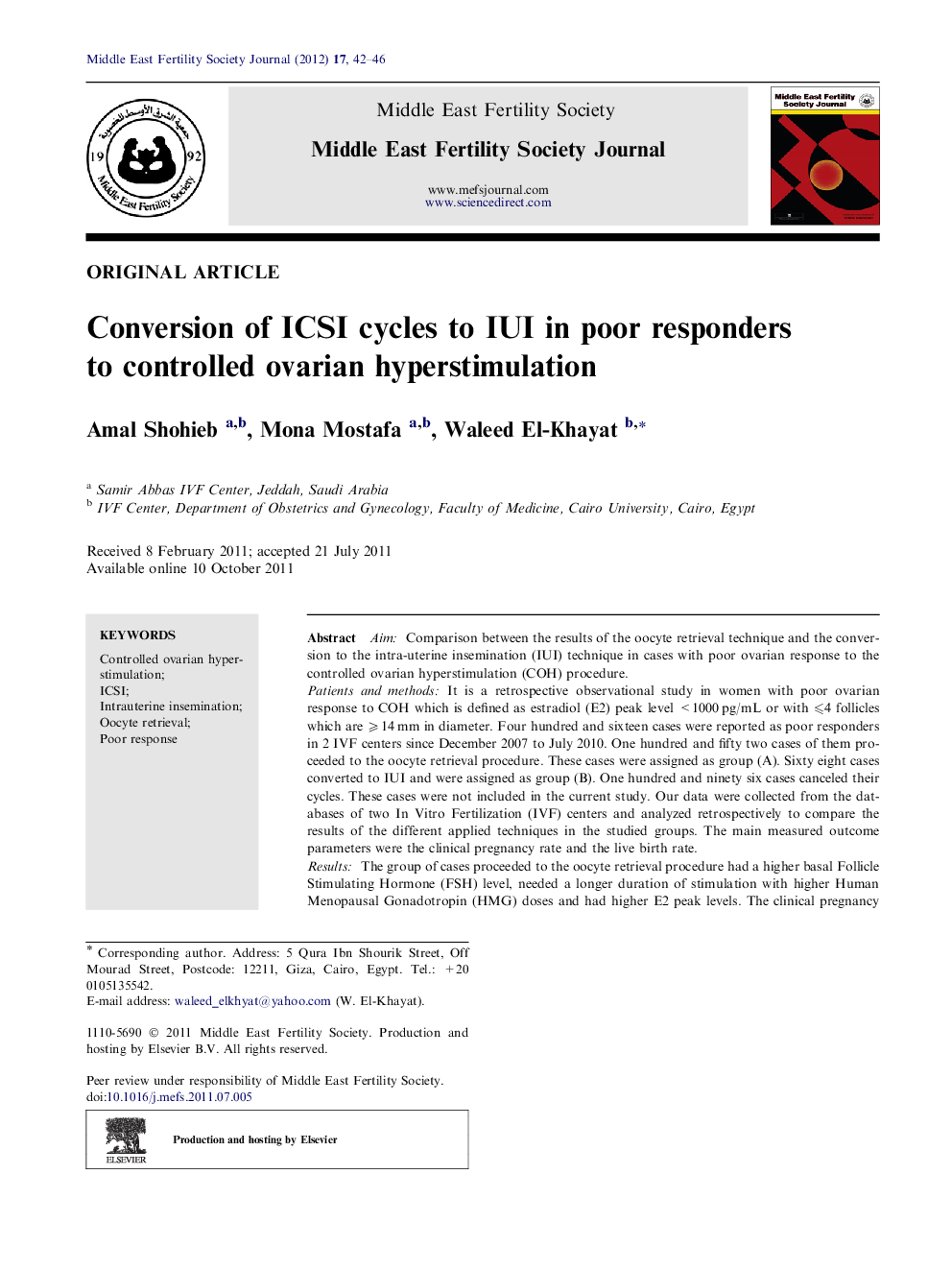| Article ID | Journal | Published Year | Pages | File Type |
|---|---|---|---|---|
| 3966309 | Middle East Fertility Society Journal | 2012 | 5 Pages |
AimComparison between the results of the oocyte retrieval technique and the conversion to the intra-uterine insemination (IUI) technique in cases with poor ovarian response to the controlled ovarian hyperstimulation (COH) procedure.Patients and methodsIt is a retrospective observational study in women with poor ovarian response to COH which is defined as estradiol (E2) peak level <1000 pg/mL or with ⩽4 follicles which are ⩾14 mm in diameter. Four hundred and sixteen cases were reported as poor responders in 2 IVF centers since December 2007 to July 2010. One hundred and fifty two cases of them proceeded to the oocyte retrieval procedure. These cases were assigned as group (A). Sixty eight cases converted to IUI and were assigned as group (B). One hundred and ninety six cases canceled their cycles. These cases were not included in the current study. Our data were collected from the databases of two In Vitro Fertilization (IVF) centers and analyzed retrospectively to compare the results of the different applied techniques in the studied groups. The main measured outcome parameters were the clinical pregnancy rate and the live birth rate.ResultsThe group of cases proceeded to the oocyte retrieval procedure had a higher basal Follicle Stimulating Hormone (FSH) level, needed a longer duration of stimulation with higher Human Menopausal Gonadotropin (HMG) doses and had higher E2 peak levels. The clinical pregnancy rates and the live birth rates were higher in the group proceeded to the oocyte retrieval than the group converted to IUI but the difference was not statistically significant.ConclusionAs the pregnancy rates difference between both groups was not statistically significant the conversion to IUI could be considered a useful substitute to the oocyte retrieval procedure in the poor responder cases. However, to adopt this conclusion, further confirmation in other prospective studies with larger sample size is a must.
